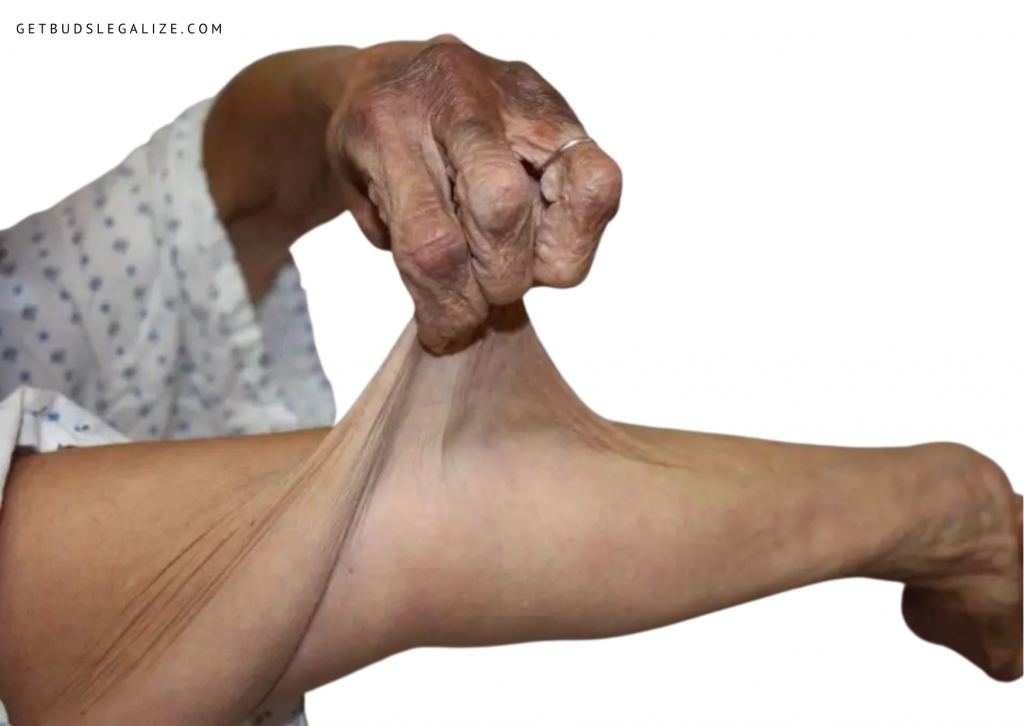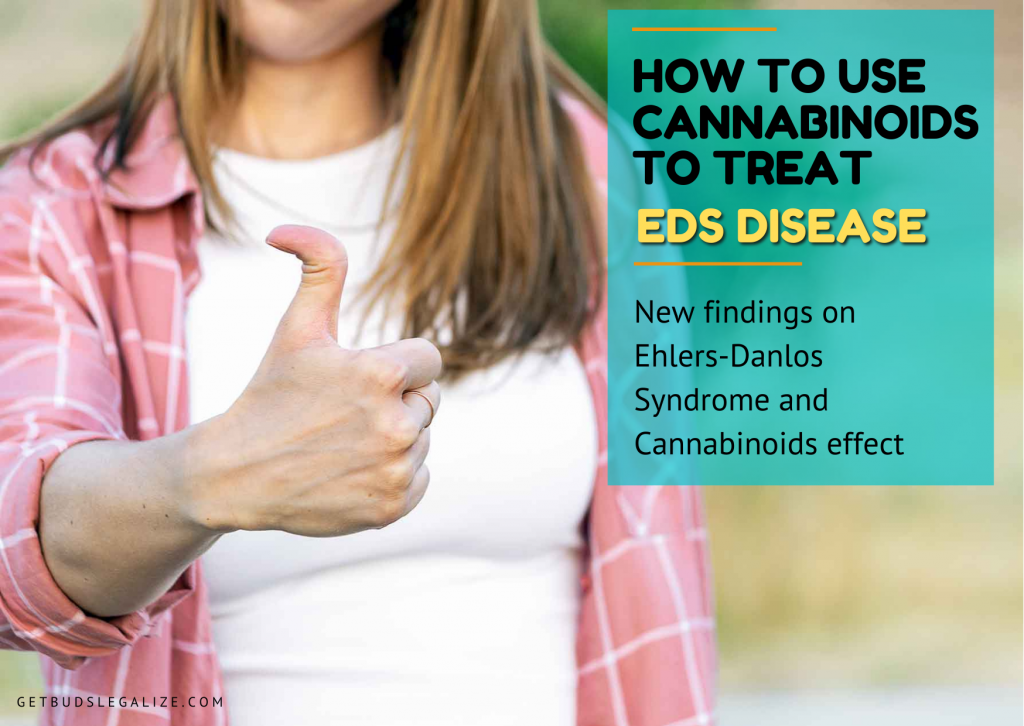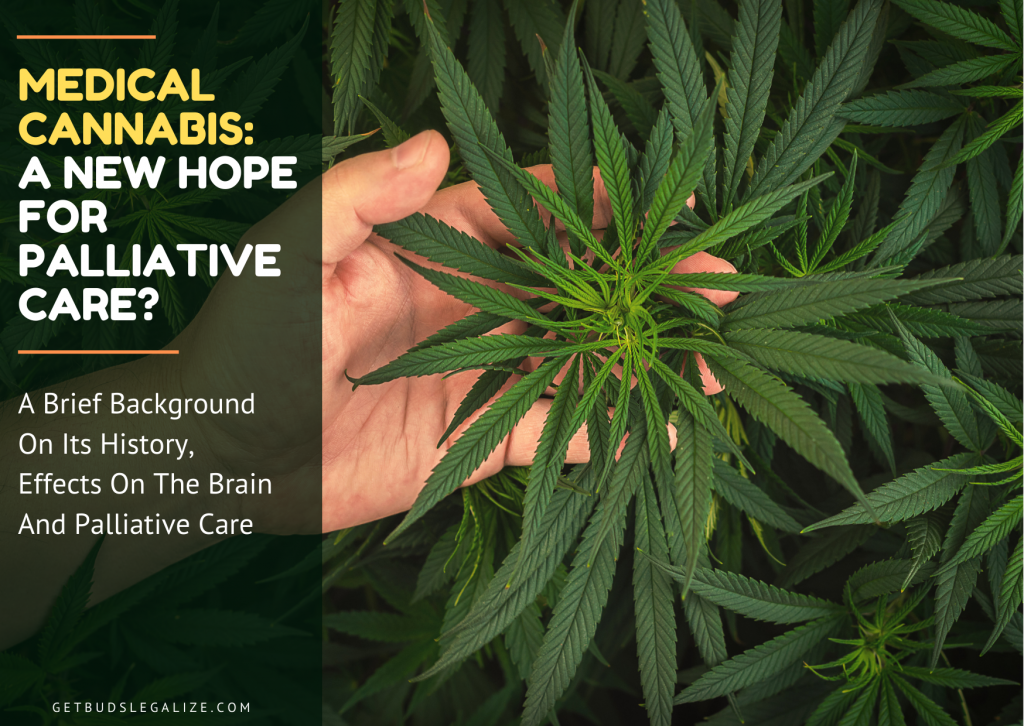How To Use Cannabinoids To Treat EDS Disease
EDS disease (Ehlers-Danlos Syndrome) is an illness that weakens the body’s connective tissue-affecting genetic disorders that impacts about 1 in 5,000 individuals worldwide these are things like tendons and ligaments which hold together sections of the body. EDS disease will loosen your joints, slim, and quickly bruise your skin. Blood vessels and organs can also collapse. There is no remedy for EDS disease but it is always possible to treat and control the symptoms. Studies have shown cannabinoids can help in managing the severe pain associated with the syndrome.
What is Ehlers Danlos Syndrome?
Ehlers Danlos Syndrome is a series of hereditary conditions, involving skin, joints, and veins affecting the connective tissues. Connective tissue supports the body’s underlying structures with resilience and elasticity. The disorder’s effect on the connective tissue causes joints to exert unusually widespread motion in all cases of Ehlers-Danlos syndrome and also leaves the skin too tense and delicate.
Losing joints caused by Ehlers-Danlos syndrome is weak and thus can extremely dislocate. It can lead to serious chronic pain and arthritis in the early stages. Excessively strained and delicate skin often quickly bleeds and the disease causes fractures that easily break open and leave wounds that grow with the time. Damaged skin does not usually repair well, and stitches sometimes tear out. Additional skin folds are often associated with the condition

What Is The Ehlers Danlos Syndrome Cause?
EDS occurs when the body does not properly produce a protein such as a collagen. Collagen serves to create the connections between the muscles, skin, and organs of your body. If this is a concern, the systems may be fragile and have difficulties.
EDS is a disease in genetics. This means you get something from your parents. If you have this disease in one of your parents, you will definitely have it too.
What Are The EDS Disease Forms?
Ehlers-Danlos syndrome is found in many forms, but both relax and weigh down the joints and stretch the skin excessively.
The most popular type of EDS is to bend your joints further. This raises the risk of being dislocated or sprayed. This form of the disease can be called hypermobility for up to 1 person in 10,000. Your skin is very soft, stretchy, and delicate in classical EDS style. People of this type usually have skin marks on their knees and elbows and contusions. They may have sprains, dislocations, or illnesses such as flat feet and cardiovascular issues. The EDS takes place in approximately 1 in 20,000 to 40,000 individuals. But certain people may have and do not know a moderate version of the disease.
Some types of Ehlers-Danlos which affect the vascular system can lead to a breaking of blood vessels and internal bleeding and to life-threatening conditions. An Ehlers-Danlos syndrome kyphoscoliosis can cause a serious spinal curvature to adversely affect breathing. Around one in 250,000 people are born in the vascular EDS category. This form weakens your blood flow and raises your tears.
Ehlers Danlos is a very rare form of the syndrome:
Worldwide there have been about 60 cases of kyphoscoliosis. This is when kids with frail muscles and bones come birth. Often they have disproportionately long limbs or fingers and a bent spinal cord that worsens with their development. Eye disorders, such as shortex or glaucoma, also have been linked with too much eye pressure.
Babies are born with their hip joints out of place with the EDS arthrochalastic shape. They have very loose joints and the same form of the bent spine as in kyphoscoliosis. Roughly 30 such cases were diagnosed.
The rarest form of EDS is called dermatosparaxis with just over a dozen cases registered. People with this skin are incredibly delicate, doughy, and easily scarred. They may have hernias most likely.

What Are The EDS Disease Symptoms?
Extreme discomfort also arises in people with Ehlers-Danlos syndrome, making everyday activities impossible. Ehlers-Danlos has been demonstrated to have dramatically correlated musculoskeletal discomfort, gastrointestinal discomfort, neuropathic pain, migraine, and nausea, with anguish and mood disorders
Pain from Ehlers-Danlos syndrome due to loosening joints has been attributed to a high incidence of psychosocial factors. Also, frequent signs are tiredness and headache.
The hereditary mutations in Ehlers-Danlos syndrome are the most often inherited. The protein used to assemble collagen is formed by the genes that mutate and induce Ehlers-Danlos Syndrome. According to Mayo Clinic, there is a 50 percent risk of a person with the most common varieties of Ehlers-Danlos syndrome passing on the gene to each infant. New gene mutations in persons with no ancestral history of the disease may cause Ehlers-Danlos syndrome.
Can You Cure EDS?
Ehlers-Danlos syndrome is not curable, so care depends on symptoms control. Medicines for pain are generally needed. Blood pressure medications can be used to reduce the burden on blood vessels for Ehlers-Danlos vascular syndrome. The power of muscles surrounding loose joins is often named for physical therapy.

The Impact of Cannabinoids on Ehlers Danlos Syndrome
Cannabis allows Ehlers-Danlos syndrome patients to cope with serious disease-related suffering. Cannabis efficacy trials for the management of pain are comprehensive. Also, Cannabis has proved to be substantially less painful, effective in pain relief, and has been shown to be refractory for other treatments.
One research that analyzed successful pain-control strategies and did not provide cannabinoids for patients with Ehlers-Danlos syndrome showed that opioids were among the most helpful1. Opiates are typically used to relieve Ehlers-Danlos discomfort and often they have problematic side effects such as sedation, a lack of appetite, fatigue, constipation, and breathing depression.
Studies showed that cannabinoids in lower concentrations with less adverse effects, relative to opioids, are effective in alleviating pain. Following a year of daily use, chronic pain patients did not have a higher chance than non-cannabis users of severe addiction.
Where You Can Legally Buy Marijuana For Your EDS Disease?
At this time, no States explicitly licensed for the treatment of Ehlers-Danlos syndrome have medicinal cannabis. However, any diagnosis in Washington D.C. for medical cannabis can be accepted as long as the medication is recommended by the DC-licensed practitioner.
Furthermore, many other states consider prescribing prescription cannabis with the advice of a doctor to treat the Ehlers-Danlos syndrome. This includes California (any chronic illness where the practitioner prescribed medical use of cannabis), Connecticut (other medical disorders may be licensed by the Consumer Safety Department), Massachusetts (other disorders as determined by the qualifying practitioner), and Nevada (other licensing conditions), Oregon.
Several states have licensed specific medicinal cannabis for the treatment of ‘chronic pain,’ a frequent symptom of Ehlers-Danlos syndrome. The countries include Alaska, Arizona, California, Colorado, Delaware, Hawaii, Maine, Maryland, Michigan, Montana, New Mexico, Ohio. The states of NH, New Hampshire, Ohio, and Vermont legalize treatment of ‘extreme pain’ by medicinal cannabis. Cannabis has been licensed for the treatment of ‘intractable pain’ by the States of Minnesota, Ohio, Pennsylvania, and Washington.

New Findings on Ehlers Danlos Syndromes and Cannabinoids Effect
According to The Ehlers-Danlos Society, researchers found a new autosomal recessive EDS type. It is uncommon and only four members in three families have it right now. It’s incredibly rare.
Dr. Hal Dietz of JHU wrote on a study aimed at developing a method for treating vascular substances, such as arterial breakup and aneurysms in medicine, that come with EDS.
The operation can be as life-threatening for EDS patients with these serious complications as the issue. Thus it will significantly alter the medical outcome by finding a non-operative solution to treating such fatal complications.
Cannabidiol (CBD) has no significant psychoactive effects, as compared to THC. It provides many valuable medicinal properties, though. It also tends to work with THC synergistic, moderating its psychoactivity and improving its health effects. CBD is also meant to enhance THC’s pain management and wakefulness behaviors.
When you take CBD on your own, there are some acts, including:
- Anti-anxiety
- Anti-inflammatory
- Sedative
- Neuroprotective
- Anti-epileptic
It is also a good antioxidant that defends against chemical damage associated with oxidation. Studies show medical marijuana where discomfort is associated with inflammation, for the site-specific anti-informational relaxation given by Ehlers-Danlos Syndrome. Many people say that the herb does not influence how much opioids work. Indeed, the herb has contributed to significantly minimizing or even removing the need for opioids or other related medications.
Conclusion
Cannabinoids can provide a highly effective treatment for EDS. Please follow us on social media, subscribe to our email newsletter, and check out our website today to learn more about this new treatment option. If you have any additional questions\, please contact us right away! We’re always happy to chat with interested parties and provide more information about the effects of cannabinoids for treating EDS disease.










